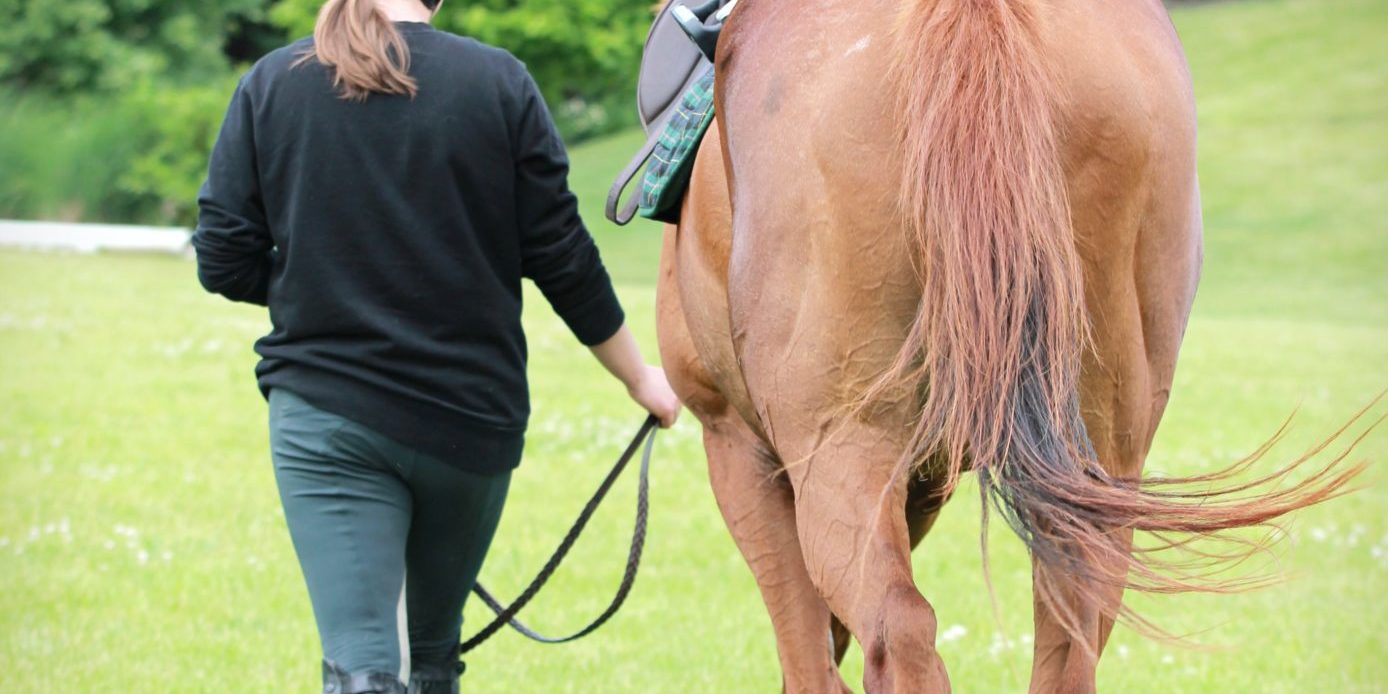There are a number of conditions of the hind leg in the horse that cause very specific, atypical type lameness and gait abnormalities.
These include stringhalt, shivers, upward patella fixation, fibrotic myopathy and rupture of the peroneus tertius muscle. Dave Kruger outlines each of these medical conditions and what to look out for below.
STRINGHALT
Stringhalt refers to a sudden involuntary hyperflexion of the hock, typically at a walk. Two forms have been described – American and Australian stringhalt.
American stringhalt occurs in isolated cases, usually affects one back leg only and is probably related to trauma of the long nerves of the leg. These cases do not recover spontaneously. It is postulated that the lateral digital extensor muscle is mainly involved and surgical resection of part of the muscle will improve many cases.
Of more significance in New Zealand is the second type, so-called “ Australian Stringhalt”.
This occurs during drought conditions when horses are forced to eat weeds they would otherwise avoid. Plants incriminated in this condition are Malva parviflora (mallowweed), a ubiquitous weed in Hawkes Bay, and a couple of dandelion species (Hypochaeris radicada and Taraxacum officinael).
There are probably other plants and fungal toxins involved and no one has yet replicated the condition by feeding the above plants in isolation. The toxins likely cause neuronal damage to the long nerves, including the left laryngeal recurrent nerve which may result in concurrent laryngeal paralysis (roarer).
The hyperflexion of the hock seen in stringhalt may be mild or so severe that the fetlock hits the horse’s ventral abdomen. Often both hind legs are affected.
Removal from affected pasture usually results in recovery in cases of Australian stringhalt but this may take many months.
SHIVERS
This refers to a condition where the horse experiences sudden involuntary flexion of the hind legs (often bilateral) and sometimes a lifting of the tail base. The cause is unknown and unfortunately these animals tend to become progressively more severely affected.
Shivers can make it extremely difficult to handle the horse’s hind feet for farriery.
UPWARD PATELLA FIXATION
This condition is recognized by a locking of the affected hind limb in extension. This occurs when the patella (kneecap) becomes stuck over the medial femoral condyle of the stifle. When a horse rests a back leg the opposite limb is locked using this mechanism. In a normal limb when the animal moves forward the patella slides back into a central position where it sits in the patella groove.
Upward patella fixation has a conformation component – more common in straight hind limbed horses. It may also occur due to poor muscle tone and a longer/ more lax than normal medial patella ligament.
Treatment in mildly affected cases is focussed on improved quadriceps muscle tone through fitness training. Hill work can be useful.
Where this fails, shortening of the medial patella ligament using surgical splitting or injection of astringent chemicals into the ligament may be useful
The last resort is surgically cutting the medial patella ligament. Whilst this has an immediate short- term benefit there is increasing evidence that the joint instability long term can lead to osteoarthritis of the affected stifle.
FIBROTIC MYOPATHY
Fibrotic myopathy results in a very typical gait where the affected foot is pulled back and slapped down onto the ground midway through the anterior phase of the stride.
This is caused by scarring in the muscle comprising the “hamstring” of the hind leg, in particular the semitendinosis muscle. The initiating cause is invariably trauma to this area of the leg and subsequent scarring and shortening of the muscle unit.
Surgery to remove the affected tissue may result in some improvement of gait but it is rarely completely successful.
PERONEUS TERTIUS RUPTURE
The peroneus tertius muscle in the horse is a fibrous band of tissue that runs from the outside of the distal femur to the hock. This muscle is responsible for the “reciprocal” action of the stifle and hock in the horse. In a healthy horse the stifle and hock flex simultaneously. The diagnosis of peroneus tertius rupture is thus very simple – flex the stifle and the hock can still be fully extended.
Typically the damage occurs when a horse gets a back foot stuck in an obstacle and tried to pull free – hyperextending the hock and causing rupture of the muscle.
Despite the seriously affected action of the limb the majority of these cases will heal well given a long enough period of box rest.




